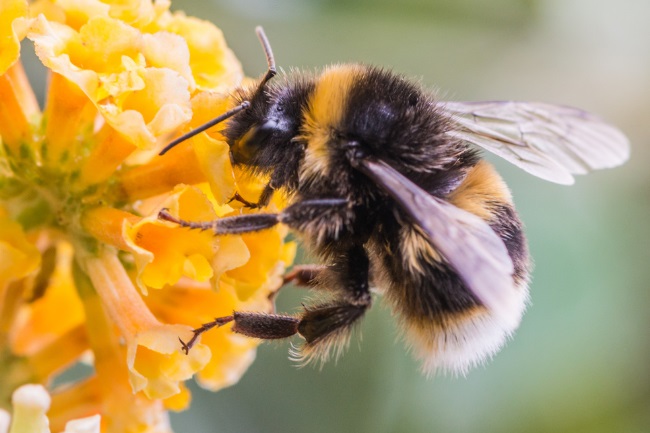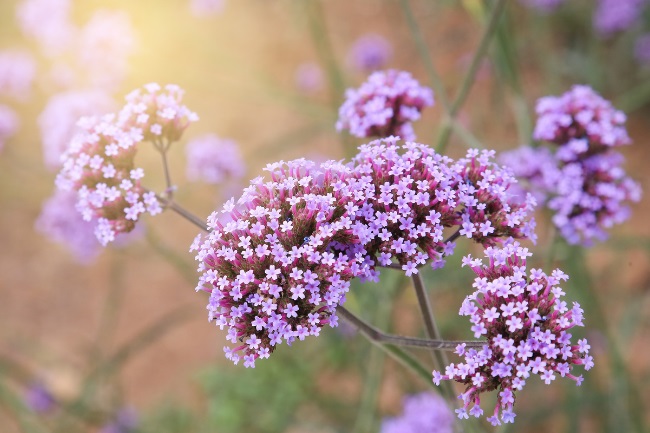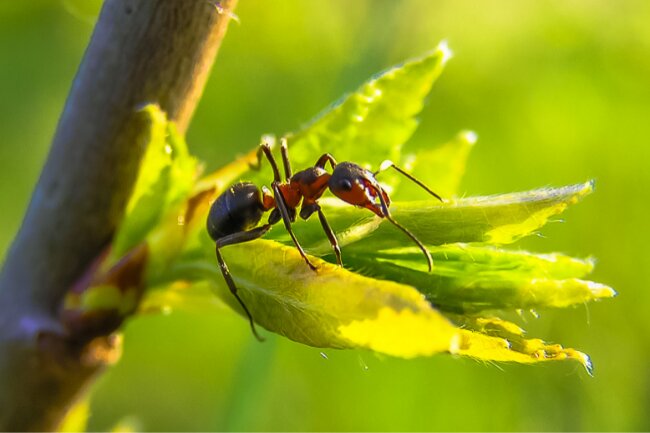Ants do pollinate, and there are some wildflowers that rely on them for this job, however, in most cases, they are less important pollinators than other insects such as bees, hoverflies and butterflies.
Contents
What is a pollinator?

A pollinator is an animal that moves pollen from one plant to another, causing cross-pollination, which in turn allows the plant to produce fruits or seeds. Flowers are designed specifically to attract pollinators in order to ensure the sexual reproduction of the plant. Their often bright colours and big petals are advertising billboards, trying to catch the eye of a passing moth or beetle.
While we may praise pollinators for this amazing work, these animals are only in it for their own benefit. Typically, they visit the flowers to drink the nectar provided as a tasty bribe or eat the pollen they are supposed to be carrying.
In some cases, they may even be tricked, thinking they are visiting a rotting corpse, as the corpse flower would have them believe, or an attractive female bee, as the bee orchid would like them to think.
Having eaten their fill, or realising they have been fooled, they will move on to the next feast. Over many millennia, flowers and pollinators have created a symbiosis, both acting in their own interest but assisting one another nonetheless.
Bee and butterflies are some of our most famous pollinators, however, a pollinator can be any kind of animal that moves pollen from one flower to another. Monkey, bats and lizards are all known to pollinate some flowers, while hoverflies, moths and beetles are other examples of insects pollinators.

Many flower species have a preference for particular pollinators, having adapted to their style of feeding or become more able to entice them in. Flower colours are often targeted to certain groups, with reds, purples and oranges all appealing to butterflies for example, while white flowers are often particularly aimed at beetles.
Not all pollinators are equally efficient, however. This can be for a number of reasons. One of the most obvious is how much pollen they are likely to accidentally get stuck to their bodies and therefore transfer to the next flower.
Bees are well known for being good pollinators precisely because their bodies are very well-designed for carrying pollen, due to the many hairs they are covered in. Butterflies are also often furry, however, their long legs and proboscis tends to mean less of them actually comes in contact with the flower, and therefore they collect less pollen.
Pollen collection styles also make a big different. Honey bees are less efficient pollinators than many other bee species, simply because they are very tidy pollen collectors. They scrape pollen into handy pollen sacs on their legs, meaning far less escapes. Mason bees by comparison dip themselves in the pollen, collecting it on hairs on the underside of their abdomen. They therefore lose far more by accident, increasing the chance of cross-pollination.
Also read: Why are Bees Important to Plants? (Pollinators)
Are ants pollinators?

As well as visiting flowers on purpose for a quick snack, ants will also pass through flowers while carrying out other business. They may be hunting prey, climbing up to reach a higher area, or farming aphids. All of these activities can lead to pollen becoming attached to them, which in turn could result in them pollinating another flower.
Ants eat a wide range of different things depending on the species. Army ant species, for example, are meat eaters, they hunt down and eat other insects, lizards or small mammals. You may be mistaken in thinking that leafcutter ants eat the leaves they collect, instead they use them to feed to an underground fungus, which they then live off.
| Ant Species | Pollination Behavior |
|---|---|
| Carpenter Ants (Camponotus spp.) | Occasionally visit flowers and help in pollination by transferring pollen |
| Velvet Ants (Mutillidae family) | Visit flowers for nectar and inadvertently carry pollen |
| Army Ants (Eciton and Dorylus spp.) | Aid in pollination through incidental contact with flowers |
| Thief Ants (Solenopsis spp.) | Occasionally visit flowers for nectar and contribute to pollination |
When it comes to feeding off pollen and nectar, there are many species of ant that will happily supplement their diet with these easily accessibly energy foods, but there are none that survive solely on this diet, as many bees and butterflies do.
Are ants good pollinators?
Firstly, because ants aren’t as pollen-mad as some other pollinators, they are naturally less good pollinators. There are some plant species that rely on ants to visit their flowers, and are designed with them in mind, but these are often in drier areas where there are fewer other pollinators to do the job. Low growing plants with small flowers, such as succulents, are often those most likely to rely on ants.
Another problem is that most ants, aside from the queens and drones, do not have wings. This means they are less likely to move pollen quickly from one flower to another, or take the pollen very far.
Ants are also much less hairy than many other pollinators, meaning there’s less for the pollen to stick to. They also clean themselves regularly, wiping away pollen as they would other dirt.
With all this added together, ants are generally not the best pollinators in the world. However, what they have on their side is numbers. Ant colonies can be vast, with many thousands of workers all heading out to collect food. They also occupy almost every habitat on Earth, and every continent aside from Antarctica.
Ants also lead busy lives, constantly on the move, often from one place to another. And in some habitats, they may be one of the most common insect species. So while they might not be very good at pollinating, they do it just enough to be important for some species of plant.

